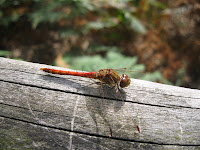|
When out capturing photos for my JesterBushcraft Youtube Channel and Blog, a good portion of those images are of fungi, wild flowers and insects. Which the majority of the time are taken low to the ground. This usually entails, me led on the floor in the wet grass, trying to keep the camera as still as possible, whilst maintaining the required angle of shot. Yes, it would be advantageous to use my tripod, but the one I have doesn't have the capability to take shots at low level to the ground. |
|
Taking photos of subjects, such as fungi, from these types of angle can add to the look and feel of the image. So I think its worth the additional time and effort to make the photo look more interesting and appealing to the viewer.
Now there are of course tripods on the market that cater for this application of camera work, such as the Hama Traveller Compact Pro Tripod |
|
My current tripod, that I use most of the time, won't let me take shots low enough to the ground for what I need. But I do have an old tripod (See Image Right) that is quite short when completely collapsed down. But even this isn't quite at the level I would like to be for the required image. Having looked at the mechanics of this old tripod, I noticed that the pivot points of each leg were governed by the moulded collar that housed the legs. So with the Dremel Hobby 300 Series Tool |
|
Yes, I know what you're thinking... it's not pretty, but nobody's going to see it and it functions just as I wanted it to. |
| This modification, was actually a lot easier and quicker than I thought to manufacture and the final outcome was great. With the legs extended out, the tripod sat very firmly and stable too, which is just what you want when taking macro images. Even with the weight of the camera, which in my case is a Fujifilm Finepix S9500, the tripod still stood firm, without any flex or strain on the leg pivot points. |
|
With this low cost and simple modification, the overall height of the camera position has been considerably lowered, allowing me to now take the sort of pictures, I managed to capture opposite. But without the hassle of lying on the ground, trying to hold the camera at the appropriate angle and with a steady hand. |
|
I will now use this modified tripod, in conjunction with my newly purchased remote shutter release cable, to hopefully capture some great macro images. I would appreciate any comments on this article and welcome any feedback you may have. Please also subscribe to keep updated with future posts. Thank You. |

















































